How many Assistant Directors work on UK and US movies?
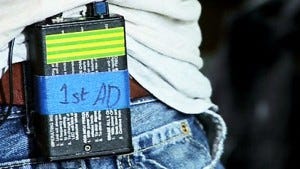
A couple of years ago I looked at the number of Assistant Directors on Hollywood films. I want to return to the topic as I now have more data, I can add the UK figures into the mix and because I have conducted interviews with over 30 working 1st ADs in the UK and US to get the human perspective. Today, I'll be looking at the data and next week I'll share the views and opinions of 1st ADs.
The Assistant Directors department are the people who make sure the film actually gets shot and that the whole production stays on schedule. The role is typically split into three classes...
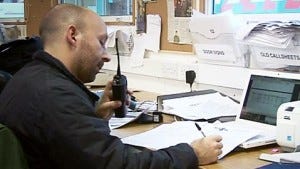
First Assistant Director (1st AD) runs the department and is one of the most senior 'below the line' crew members.
Second Assistant Director (2nd AD) works directly underneath the 1st AD and is primarily responsible for timing all of the elements the set will need in the upcoming hours and days. They also produce the paperwork that cast and crew members need in order to know when and where to show up, such as the Call Sheet.
Third Assistant Director (3rd AD) does all of the tasks for the 1st AD and 2nd ADs, including communication, crowd control, moving actors between hair/makeup/etc and the set, managing extras and pretty much anything else which is needed to ensure the 1st AD can keep the production on schedule.
Despite this neat hierarchy, the nitty gritty of credits within the Assistant Directors department can get complicated. Credits can include a 'Second Unit Daily Assistant Director', a 'Second Second Second Assistant Director', an 'Additional Third Assistant Director for the additional photography' to give just three examples. The film Hero had a fourth, fifth, sixth and even a seventh AD.
In order to study AD credits, I started with two datasets - all feature films shot in the UK between 2005 and 2014, and the top 100 US-grossing feature films between 1994 and 2015. I removed documentaries and animations, as these films have different relationships with the AD department. This left me with 2,022 UK films and 2,030 US films to study. I then grouped the credits into the three broad categories I have listed above.
How many Assistant Directors work on a film?

Of the 2,022 films shot in the UK over a ten-year period, there were 2,977 First Assistant Director (1st AD) credits, 2,766 Second Assistant Director (2nd AD) credits and 2,559 Third Assistant Director (3rd AD) credits. That means that on average each film had 1.5 1st ADs, 1.4 2nd ADs and 1.3 3rd ADs. In addition, there were 300 credits going to training and internships roles within the Assistant Directors department
Within top US-grossing films (1994-2015), the numbers were higher, with an average of two 1st ADs, four 2nd ADs and 1.7 3rd ADs per film. There were also over three times the number of trainees (1,088) despite the fact that my datasets contain almost exactly the same number of films (UK = 2,022 films, US = 2,030 films).
I'm not sure why US films have so many more trainees than UK films, but two good reasons could be that US films are much more unionised than UK films, and that the US dataset includes much larger films (more on that below). 'The Da Vinci Code' had 17 trainees within the AD department, although the average on the US films was 0.5 trainees per film.
It seems that AD departments are growing over time, with the high point for AD average employment coming in 2010.
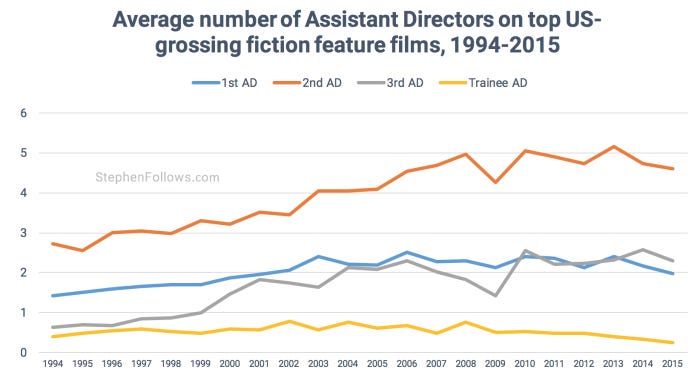
The bigger the movie, the greater the number of Assistant Directors
Unsurprisingly, films with bigger budgets hire more Assistant Directors. This will be for a mixture of reasons including: more people on set to manage, more complicated scenes to film and the ability to have a full complement of crew (unlike the lowest budget films where one person might have to do the work of a few people).
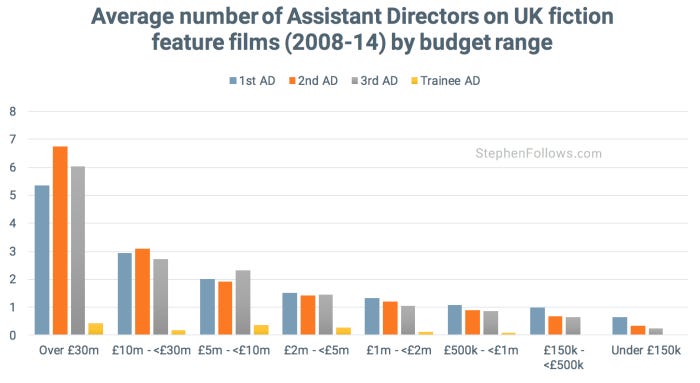
As budgets increase, the biggest growth within the Assistant Directors department is among 2nd ADs, with the largest films hiring an average of nine Second ADs across all filming.

Adventures need ADs, and without them it's a Horror
Turning to genre, we can see that films with high levels of adventure, action and fantasy require the largest number of ADs. The genres with the smallest AD departments include horror, drama and thriller.
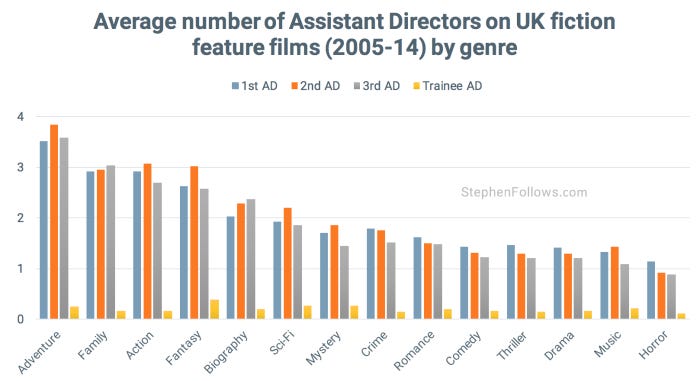
A similar pattern can be found amongst the US films.

Most Assistant Directors are men
We can't tell too much about the ADs from the outside (such as age, race, experience levels, etc) but we are able to ascertain their gender. Like most crew members in the film industry, there is a heavy male skew and as we move up in seniority, we see an even greater number of roles going to men.
90% of 1st ADs on top US-grossing films are men, as are 83% of 1st ADs on UK films. Trainees are much closer to gender equality, with men making up 57% of trainees in the US and 59% in the UK.
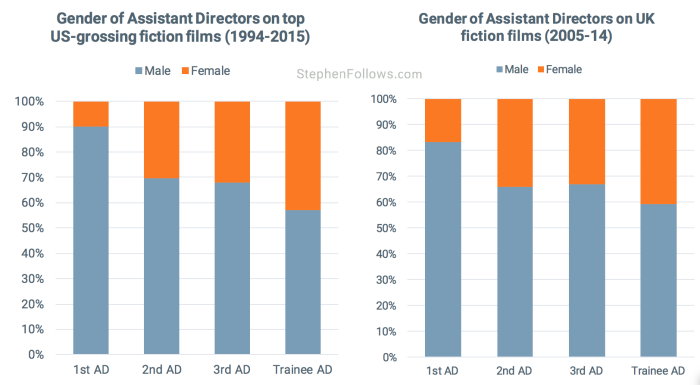
Over time, we can see that the gender makeup of the AD departments on both UK films and top US-grossing films has not shifted much.
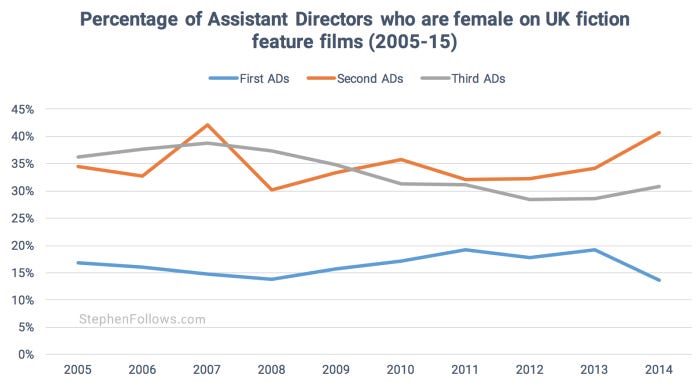
The picture is the same for top US-grossing films.
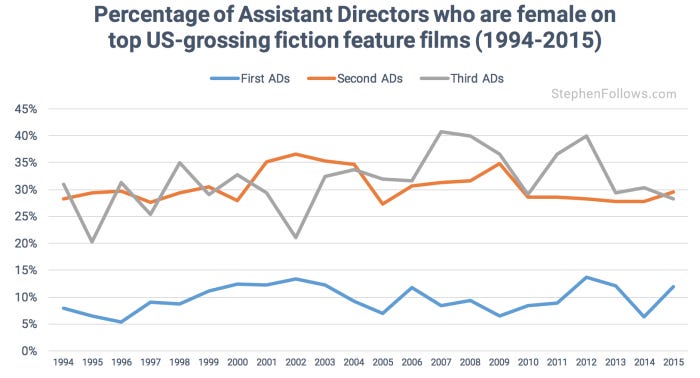
N.B. I left off US trainees as there are too few to study over time.
Notes
As with any such research project looking at crew credits, sadly I cannot measure the input each person put into the film. Therefore, someone who worked for just a few days as a film's 1st AD will appear to be the same as someone who 1st'ed the film for months. Likewise, 1st ADs on the Second Unit will also appear as '1st AD' in these calculations.


